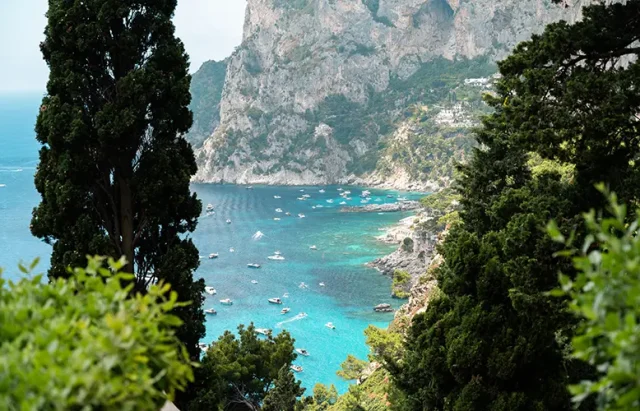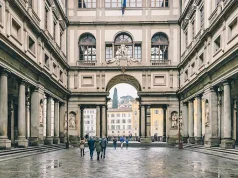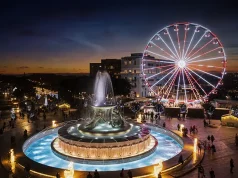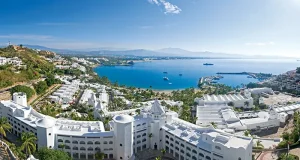
Among the still waters of the Gulf of Naples, where the Tyrrhenian Sea runs deepest and the cliffs look as if they were carved with a scalpel, rises an island that has fascinated Roman emperors, filmmakers, and sailors alike. Capri is no recent discovery. Its history, eroded by time like the rocks that surround it, withstands the fleeting trend of mass tourism. And yet, it remains, with its character intact.
The island has a rhythm of its own, a way of looking at visitors without urgency. From the first curve on the road climbing up from Marina Grande, you understand that Capri is not willing to reveal itself all at once. It offers itself in fragments. And it is precisely this promise of incomplete beauty that makes it irresistible.
Underwater light: the enigma of the Blue Grotto
There are few tourist experiences in the Mediterranean that still have the power to astonish even those who pride themselves on having seen it all. The Blue Grotto (Grotta Azzurra) is one of them. From the outside, the entrance seems unimpressive: a narrow gap at water level, low enough that passengers in the small boats must lie flat on their backs. But once inside, everything changes. A cathedral of water tinted with fluorescent blue opens up in the darkness. Sunlight enters through an underwater opening and reflects off the white floor of the grotto, creating an electric, almost unreal effect. All you hear is the dull knock of the oar against the hull. There is no music, no crowds. Only color. And that is enough!
Exploring the coast by water: another way to understand Capri
For many, arriving in Capri by ferry is simply a means to an end. But those who choose to circle the island on private boats discover a different narrative, one less tamed by conventional tourist circuits.
Services like Capri boat rental by Giosymar allow you to explore the surroundings of Capri, from a more intimate perspective. You can access grottos unreachable by land, stop at hidden coves, or even have lunch on board with views of the Faro di Punta Carena, without ever checking the time.
The boating experience transforms the landscape: the Faraglioni rise like colossal sculptures, the Grotta Verde reveals its emerald hue, and Marina Piccola comes alive with the comings and goings of yachts. Every stop is a postcard that needs no filter.
Silence at the summit: Monte Solaro
From Anacapri, a chairlift ascends to the highest point of the island: Monte Solaro, at 589 meters above sea level. The ride takes just twelve minutes, but in that time, the island shifts in scale. Up there, the air feels different. You can see the outline of Vesuvius, the jagged line of the Sorrentine coast, and on especially clear days, even the silhouette of Sicily. Capri seems like a dot on the map and, at the same time, the center of everything. The summit isn’t made for crowds. It’s more a place to pause in silence and savor the essence of Capri.
Gardens hanging on the edge of the abyss
The Gardens of Augustus are neither the largest nor the most luxurious in Italy. But they have something that makes them unmissable: their location.
Suspended over a cliff, they offer a breathtaking panoramic view of the Faraglioni and the winding Via Krupp. These are gardens built for contemplation, not for strolling. In summer, the scent of lemon trees mingles with the sea breeze. In spring, native flowers burst into bloom. Neoclassical sculptures, scattered along the paths, seem to have ended up there by chance.
Streets full of enchantment
The town of Capri is small, but its streets hold memories. Between the Piazzetta, the high-end boutiques, and the cafés where time slows down, there are corners that don’t appear in the guidebooks. Via Camerelle, with its mirror-polished shop windows, contrasts with alleyways where the paint peels with dignity. Places like the Charterhouse of San Giacomo, the Cerio Museum, or the Church of San Stefano don’t usually appear on fast-track itineraries, but they hold much of Capri’s soul.
In short, Capri is not a stopover island. It is a destination that demands to be experienced without haste and enjoyed to the fullest. Very nearby, other beautiful islands complete the archipelago of the Gulf of Naples: Ischia, with its volcanic hot springs; Procida, with its candy-colored houses.
Without a doubt, the island of Capri is a place that calls you back again and again!





